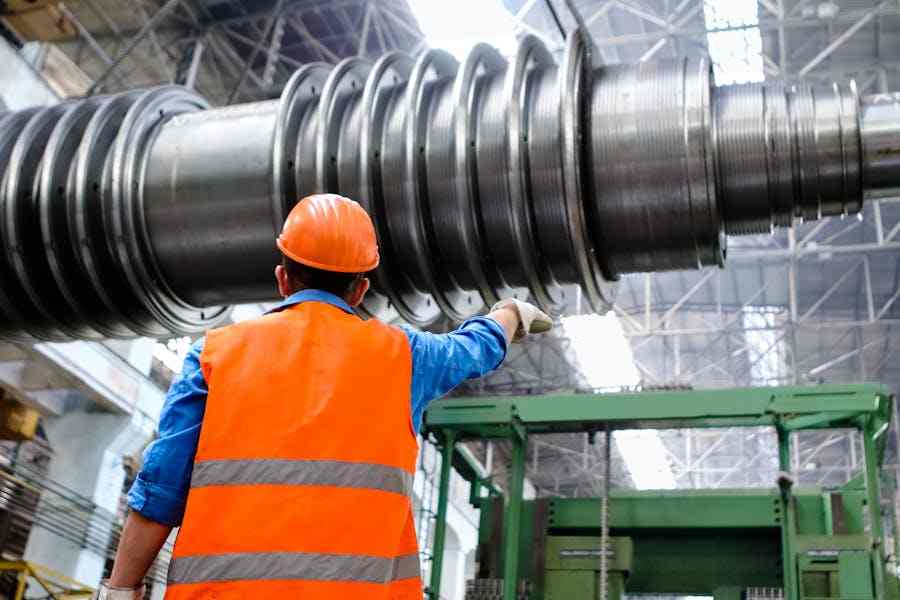Improving production efficiency is essential for any modern manufacturing operation, and learning How to Improve OEE of Your Production Line plays a major role in achieving that goal. OEE reflects how effectively equipment performs and highlights where losses occur, whether through downtime, slow cycles, or quality issues. When companies understand these performance gaps, they can address problems faster and build stronger, more consistent workflows. Today’s production environments rely on accurate data, streamlined processes, and proactive maintenance to stay competitive. Without clear OEE strategies, factories face preventable delays, unnecessary waste, and avoidable defects. By using real-time monitoring, structured maintenance routines, automation tools, and well-trained operators, businesses can transform raw data into meaningful improvements. This approach helps uncover inefficiencies, strengthens decision-making, and boosts productivity across the entire line. Whether the goal is higher output, better product quality, or fewer interruptions, OEE-focused practices give manufacturers a practical path toward a smarter, more reliable production system.
Leveraging Advanced Data Collection Methods
In today’s fast-paced manufacturing environment, real-time data is king. Gone are the days of relying solely on manual data collection and delayed reporting. The days of dealing with islands of information are behind us, now that the Industrial Internet of Things has integrated production data gathering and analysis in a way that’s faster, better, and more accurate.
Automating Data Collection and Reporting
Manual data entry is prone to errors and time lags. Bringing automation into the mix does double duty, snuffing out mistakes while setting your human capital free to tackle weightier, creative challenges. Advanced OEE software by LineView can automatically collect data from various sources, compile it into meaningful reports, and even suggest optimization strategies.
Consider implementing a centralized dashboard that displays key OEE metrics in real-time. Tracking progress just got a lot easier: this visual display shows teams where they’re going wrong and how they’re doing better.
Embracing Predictive Maintenance Strategies
Unplanned downtime is a major culprit in lowering OEE scores. Traditional reactive maintenance approaches often lead to extended periods of equipment inactivity. With data analytics and machine learning at the wheel, equipment maintenance becomes a proactive, rather than reactive, process.
Utilizing Machine Learning for Failure Prediction
By analyzing historical data and real-time equipment performance metrics, machine learning algorithms can predict potential failures before they occur. Forward-thinking maintenance teams sync their schedules with planned downtime, avoiding pesky production halts.
For example, vibration analysis coupled with machine learning can detect subtle changes in equipment behavior that may indicate impending failure. Armed with this information, you can order parts and schedule maintenance proactively, avoiding costly emergency repairs.
Implementing Condition-Based Maintenance
Rather than adhering to fixed maintenance schedules, condition-based maintenance tailors interventions to the actual state of the equipment. Imagine knowing your equipment is in top shape, ready to tackle the next task without hiccups or surprises – that’s what you get with optimized maintenance.
Temperature, pressure, and lubricant quality – these are just a few of the essential parameters that sensors can continuously monitor to keep your equipment running at its best. When these metrics deviate from normal ranges, the system triggers maintenance alerts, allowing for timely interventions that keep OEE high.
Optimizing Production Processes
Improving OEE isn’t just about maintaining equipment; it’s also about refining the production process itself. Pinpoint the trouble spots in your process, eliminate them, and watch your OEE numbers take a quantum leap.
Conducting Value Stream Mapping
By putting your production process on paper, you’ll get a bird’s eye view of where things are going awry and money’s being squandered. Think of your operations like a puzzle – finding the right pieces to eliminate can make the whole process hum with precision and productivity.
For intance, you might discover that excessive inventory between production stages is causing delays. With a just-in-time inventory system in place, you can kiss those bloated buffer stocks goodbye. The benefits are twofold: smoother production and a drastic OEE uptick that’ll make your competition green with envy.
Implementing Lean Manufacturing Principles
Lean manufacturing focuses on eliminating waste in all its forms. By stripping away waste and excess, you’ll naturally ramp up your production environment’s efficiency, giving your OEE a welcome boost.
Consider implementing 5S methodology to organize workspaces, reducing time wasted searching for tools or materials. Picture a well-oiled machine where every cog hums in harmony. That’s what happens when you standardize work procedures, eliminating variances and boosting OEE scores as your shifts snap into sync.
Enhancing Operator Training and Engagement
Even the most advanced equipment can’t reach its full potential without skilled operators. Boosting OEE calls for a two-pronged approach: Provide your team with top-notch training, and create an environment that sparks engagement.
Developing Comprehensive Training Programs
Create structured training modules that cover not just basic machine operation, but also troubleshooting skills and OEE principles. Optimal learning conditions require flexibility. Learners should encounter a lively mix of classroom dialogue, practical skill-building, and thought-provoking digital modules – each addressing distinct learning preferences.
For example, augmented reality (AR) training simulations can provide operators with safe, immersive experiences in handling complex scenarios. When operators feel confident in their abilities, the entire production process becomes more streamlined, and that’s when you start seeing those OEE numbers take off.
Implementing Operator-Led Improvement Initiatives
Empower operators to take ownership of OEE improvement. Host regular get-togethers where operators can swap stories and propose fresh ideas for streamlining their work. You’d be surprised what kind of straightforward, effective ideas emerge when you tackle OEE from the bottom up.
Spark some friendly competition by recognizing and rewarding suggestions that boost OEE metrics. Employee motivation gets a serious lift when they’re encouraged to share their production expertise, which can lead to significant process improvements.
Utilizing Advanced Analytics for Continuous Improvement
The wealth of data generated in modern manufacturing environments holds the key to ongoing OEE optimization. Digging through data with advanced analytics tools often reveals surprising insights and pathways to improvement.
Implementing OEE Analytics Platforms
Invest in sophisticated OEE analytics software that can process vast amounts of production data. It’s not about guessing anymore – these platforms use hard data to pinpoint the correlations that make a real difference in OEE performance, and the insights are undeniable.
For instance, an analytics platform might reveal that OEE consistently drops during certain weather conditions. Armed with this knowledge, you can implement preventive measures, such as adjusting climate control systems, to maintain high OEE levels year-round.
Leveraging Artificial Intelligence for Process Optimization
AI algorithms can analyze complex production scenarios and suggest optimal settings for maximizing OEE. The more they learn, the better they get – and that means spot-on recommendations that keep improving with each passing day.
For a more streamlined production process, think about bringing AI on board to handle scheduling duties. By factoring in historical performance data, current orders, and equipment status, such a system can create optimized production plans that maximize OEE across your entire facility.
Addressing the Six Big Losses
To truly elevate your OEE, it’s essential to tackle the six big losses that impact manufacturing efficiency. These losses, categorized under availability, performance, and quality, form the foundation of OEE calculation.
Minimizing Planned and Unplanned Stops
Planned stops, such as changeovers and scheduled maintenance, and unplanned stops due to breakdowns significantly affect availability. Streamline changeover processes using SMED (Single-Minute Exchange of Die) techniques. For unplanned stops, implement robust preventive maintenance programs and quick response protocols.
Reducing Minor Stops and Slow Cycles
Minor stops and reduced speed operations eat into performance efficiency. Pinpoint the sources of these issues by running time-intensive studies and collecting essential input from the operators who know the process best. Sometimes, a small tweak to machine settings or a bit of fine-tuning on material flow can bring big results.
Eliminating Start-up and Production Defects
Quality losses due to defects directly impact OEE. Implement stringent quality control measures at the start of production runs to minimize start-up defects. For ongoing production, consider implementing in-line quality checks and statistical process control to catch and correct issues early.
Integrating OEE with Other Performance Metrics
While OEE is a powerful metric, it’s most effective when integrated with other key performance indicators (KPIs). We’re talking big-picture thinking here – a clear and thorough look at your manufacturing performance that sheds light on every detail, no matter how small.
Aligning OEE with Financial Metrics
Connect OEE improvements to financial outcomes. For example, calculate the revenue impact of OEE gains or the cost savings from reduced waste. Showing the value of OEE improvement initiatives is crucial – it gives stakeholders confidence in the investments we’re making.
Incorporating OEE into Overall Performance Dashboards
Create integrated dashboards that display OEE alongside other crucial metrics like on-time delivery, inventory turns, and customer satisfaction. Looking at the forest instead of just the trees helps you understand how boosting OEE supports your organization’s success.
Conclusion
A strong and efficient production system depends on continuous improvement, clear performance insights, and consistent operational discipline. When manufacturers commit to identifying losses, optimizing maintenance routines, and empowering their workforce, every part of the production line benefits. Real progress happens when data drives decisions and teams work together to reduce downtime, prevent defects, and maintain smooth equipment performance. By applying the principles discussed throughout this guide, companies gain the clarity they need to refine processes and strengthen output.
Knowing How to Improve OEE of Your Production Line ultimately leads to higher productivity, lower operational costs, and greater long-term stability. With the right strategies in place, any production environment can achieve meaningful and measurable growth.













































Leave a Reply